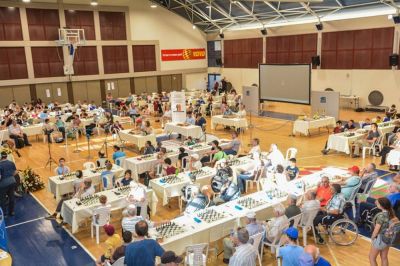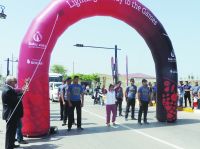US-based The Daily Caller has published an article by political analyst, author of the “Murder in the Mountains: War Crime in Khojaly” Raoul Lowery-Contreras, headlined “In Armenia and Azerbaijan, a cease fire that isn’t”.
In his article Raoul Lowery-Contreras says: “During my lifetime -including eight-years of service as a United States Marine (1959-1967) -I never heard a shot fired in anger until April 12 of this year. This came up when I was addressing 300 American teenagers at the Marine Corps’ huge base at Camp Pendleton, just north of San Diego. They weren’t Marines.
The shot fired in anger was 7,000 miles from Camp Pendleton in Azerbaijan, the friend of America. The artillery barrage I heard was outside a village named Gapanli in Azerbaijan’s Tartar district within sight of Armenian forces. The Tartar district is 332 kilometers southwest of Azerbaijan’s capital city, Baku. It is a rural farming district just east of the Armenian-occupied highlands of Nagorno-Karabakh. Gapanli sits within sight of Armenian big guns.”
“Armenian forces militarily occupied Azerbaijan’s national territory in 1992 and 1993 after ethnically cleansing Azerbaijanis from Armenia itself, the Nagorno-Karabakh district and surrounding Azerbaijani districts far from Armenia. Armenia then declared Nagorno-Karabakh an ersatz “republic.” 25 years later not a single country recognizes the “republic.”
Meanwhile, the United Nations has voted four different resolutions calling for Armenian forces to leave Azerbaijani territory. Armenia ignores them.
Despite a 25-year long “cease fire” overseen by the Organization for Security and Cooperation in Europe’s (OSCE) international observers, Armenians bombard Azerbaijani territory almost daily.”
“Gapanli was built by the Azerbaijani government to house refugees, internally displaced people (IDPs), expelled by Armenian forces from Armenia and Azerbaijani territories. The United Nations believes almost a million displaced refugees were ethnically cleansed by Armenian forces from their homes. Gapanli is but one of many settlements built throughout Azerbaijan for displaced Azerbaijanis. Unlike most other such settlements, Gapanli is on the “Line of Contact,” Raoul Lowery-Contreras say sin his article.
“To rub salt in the quarter-century old “Line of Contact” that separates Armenian and Azerbaijani forces, daily reports about Armenian big guns firing into Azerbaijan are made by neutral observers. Artillery barrages leave evidence. In Tartar, I was shown shrapnel damage of buildings in the town that remind everyone of a flare-up in 2016,” the article says.
“One of the most egregious abuses of occupying Armenian forces is that they diverted creeks, streams and rivers making their way down from the mountains to the Tartar district. “During the war, the irrigation system in the Nagorno-Karabakh region was destroyed as well.” That blocked water for Azerbaijani crops. With a huge effort from the national government, 4,000 wells were drilled, and Tartar agriculture is as bountiful as ever despite the huge cost of drilling the wells and providing electricity to pump millions of gallons of crucial water. The Armenians apparently were unaware that Tartar’s underlying aquifer had not been touched over the centuries, thus more water than needed simply needed to be tapped and pumped.”
“Tartar farmers are prospering while Armenian forces over the surrounding hills can’t feed themselves and must receive food, supplies, and big gun shells from faraway Armenia.
Danger floats over Tartar like a heavy fog. Bomb shelters are provisioned and ready for the town’s three-four thousand people to shelter in when Armenian big shells and rockets are aimed at them again. Children sleep with their shoes on, so they can run to bomb shelters during nighttime.”
“In Gapanli and Tartar, the people go about their business. Visitors are greeted by a charming, energetic and enthusiastic mayor in City Hall followed by lunch of locally grown produce and meat.
The mayor was born and raised in Armenia’s capital, Yerevan; his Azerbaijani family was expelled not only from Yerevan but also from Azerbaijani territory seized later by Armenian forces. He said he would not run away again, he is not the child he was when his family was routed by Armenians. His constituents in Tartar feel the same. So, do the Azerbaijanis of Gapanli who live within sight of Armenian big guns and villages, because, as they say, “It is our land,” the article concludes.
Yusıf Babanli
Special Correspondent
© İstifadə edilərkən "Xalq qəzeti"nə istinad olunmalıdır.





















